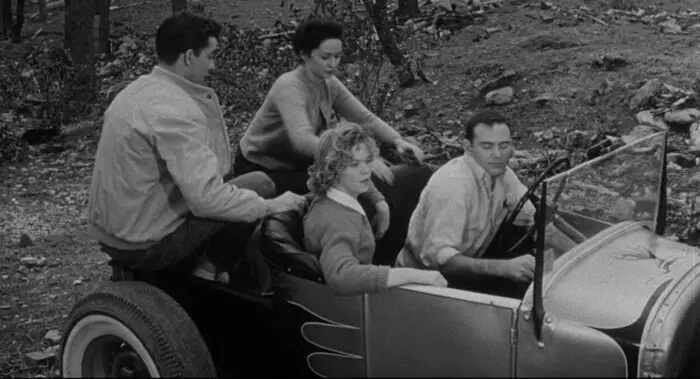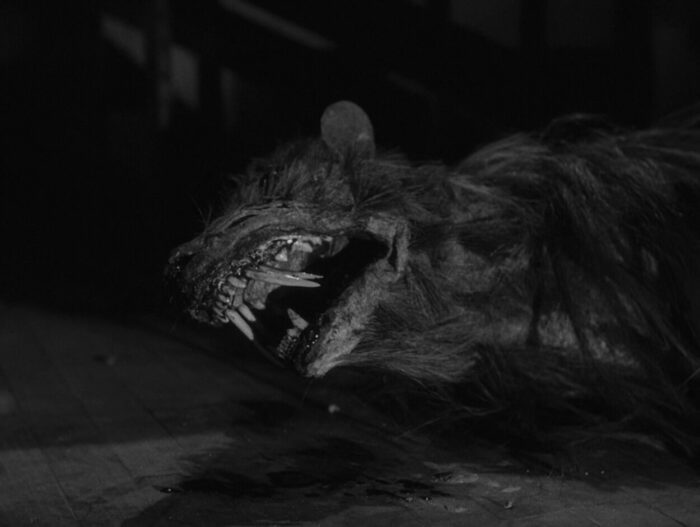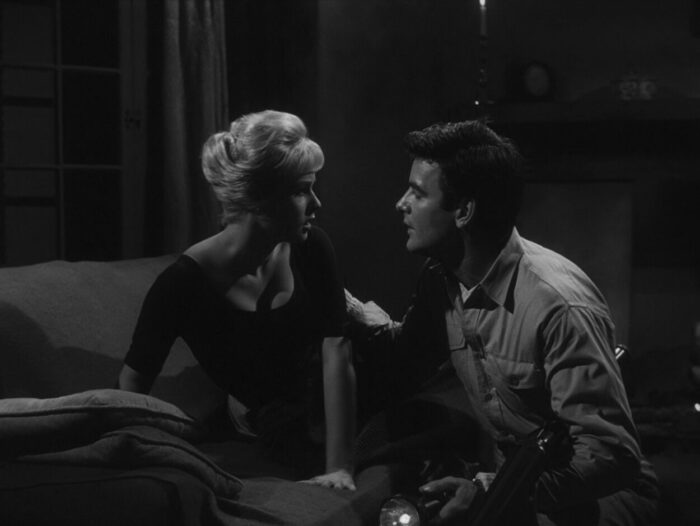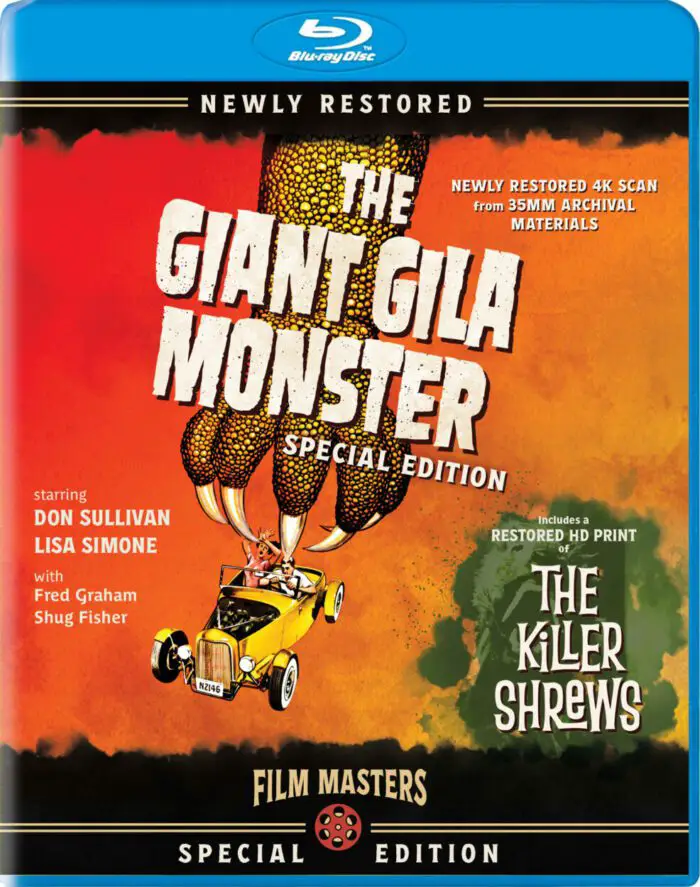In 1959, the era of sci-fi B-movies destined for drive-in theaters and cut-rate double features was in winding down with films like Attack of the Giant Leeches, She-Demons, Teenagers from Outer Space, and The Wasp Woman. It would prove the subgenre’s last-gasp year, but not before the release of The Giant Gila Monster and The Killer Shrew, two nearly-no budget shock-schlock films from director Ray Kellogg and producer Gordon McLendon. Now, more than half a century later, the two films together, both cult favorites, have been restored in a 4K scan from their original 35mm masters by Film Masters, the new vintage film restoration and distribution company launched in June by industry veteran and film historian Phil Hopkins.
The release is the first from Film Masters, whose upcoming slate includes a variety of other sci-fi horror mashups and forgotten classics. No one will mistake either The Giant Gila Monster or the bonus film The Killer Shrews, which were originally released as a double-feature, drive-in bill in 1959, for masterpieces of cinema. Both are shot on a shoestring budget with only the barest of special effects, full of stilted dialogue and sloggy editing; and yet both still convey a timeless charm. For a brand-new boutique label concentrating on physical media—perhaps a risky strategy in this age of streaming—Film Masters is working to carve out a specific niche and doing so with loving care.
Presented here from a new 4K scan of the film’s original 35mm, The Giant Gila Monster is top billed. The plot is a quirky mashup of teen delinquency, cool cars, some crooning from star Don Sullivan, and—yes—a giant Gila Monster, indeed. It opens with two teens out alone in a car, menaced by the mostly unseen lizard. Their disappearance sets off an inquiry that pits the local gang of teens against their parents and the law. The group’s leader, hot rodder Chase (Sullivan, who was 30 at the time), takes on the responsibility of solving the mystery of the rampaging Gila Monster (actually a Mexican beaded lizard shot against miniature landscapes), while simultaneously teaching the older generation a thing or two, inspiring his young sister who can walk only with the assistance of leg braces, and becoming a pop smash with a Christian-themed ukulele tune at the local sock hop.

With a plot that turns on a perceived sexual transgression, just like those hoary old urban legends that warned against parking and petting, The Giant Gila Monster takes pains to demonstrate that the real threat is not juvenile delinquency but instead a biological mutation. As the protagonist, it’s up to Chace in particular to posit the moral virtue of the young against the drunken, corrupt, and/or short-sighted older characters. The monster itself, lurking about the periphery of the town, is not especially frightening, shot mostly in isolated close-ups of the lizard staring down his next victim—at least until Chace figures out a way to slay the beast with a hot-rod-and-nitroglycerin cocktail.
The Killer Shews (restored in HD, a slight step down from the pristine clarity of The Giant Gila Monster) features a small group of riverboat passengers and their captain stranded on a remote island where a voracious herd of shrews—the size of German shepherds with fearsome fangs and ravenous appetites—runs wild. This is a film of such stature it featured, like its companion, on Mystery Science Theater 3000 some time back. James Best and Ken Curtis (Gunsmoke‘s Festus, who co-produced) star alongside Miss Universe 1957, Ingrid Goude, and a handful of pet dogs outfitted with fangs, or in some cases, simple hand puppets, as the supposedly terrifying oversize shrews.

If neither film ever truly manages to terrify or enthrall viewers, both make for some entertaining viewing, and The Killer Shrews in particular follows suit with scores of horror films in which the black character dies first, a trope that commonly is thought to reflect larger cultural anxieties about race and representation. Yet, the primary appeal is the do-it-yourself ethos of the productions, both shot and set in Texas by local radio impresario Gordon McClendon—who’s credited with inventing the “Top 40” radio-show format but who didn’t last long as a filmmaker. If he can do it, it seems, with little more than a small bank account and a corps of willing participants, so can anyone else.

Both The Giant Gila Monster and The Killer Shrews are offered in theatrical widescreen aspect ratio of 16×9, as well as in 4×3 (television) ratio, on region-free discs with DTS-HD sound (Blu-ray) and Dolby AC3s sound (DVD).
BONUS MATERIALS

The two discs feature an array of bonus features to complement the film’s production and reception.
Ray Kellogg: An Unsung Master, a Ballyhoo Motion Pictures documentary written by C. Courtney Joyner and narrated by Larry Blamire, is short, at 16 minutes, but highly effective at tracing the career arc of the Iowa-born director from his early association with John Ford to his work on these films to his later co-directing The Green Berets with John Wayne and effects work on the Batman! movie and others.
An Interview with Don Sullivan, conducted by author Bryan Senn in 2009, is wide-ranging and endearing, but compromised by poor audio quality and a tedious loop of slightly animated images of the actor (there are perhaps a dozen images on a loop for the interview’s 90-minute duration). At times the content is difficult to discern, though Sullivan offers some fascinating insights into his career in film, his time on the set of The Giant Gila Monster, and his colleagues and collaborators, including Elvis Presley. Sullivan passed away in 2018, so there is value to the interview even if its technical quality is subpar.
Audio commentary on The Giant Gila Monster by Larry Strothe, James Gonis, Shawn Sheridan and Matt Weinhold from The Monster Party podcast, who offer a combination of scripted research and improvised banter.
Audio commentary on The Killer Shrews by professor and film scholar Jason A. Ney of Colorado Christian College, an affable expert guide to the film. With the two very different approaches to the commentary tracks, I found myself wishing for two tracks—one from each—on both films.
Original, vintage radio, marketing spots for both features, provided by Gary L. Prange.
Essays by Don Stradley and Jason A. Ney, provided in a 24-page full color booklet.
Altogether, this is an excellent first effort from Film Masters. While neither film is particularly good, together they make for an awfully fun—or fun and awful—double feature fright fest, and the company’s bonus features provide the exact kinds of contexts that enrich understanding of the era and the productions themselves.
Both Blu-ray and DVD versions are available for pre-order (for $29.99 and $19.99, respectively) from Film Masters, with a release date of September 26, 2023.



